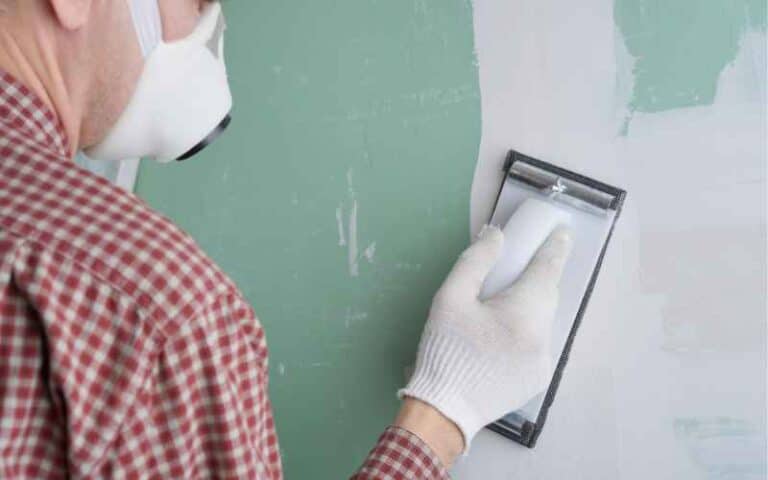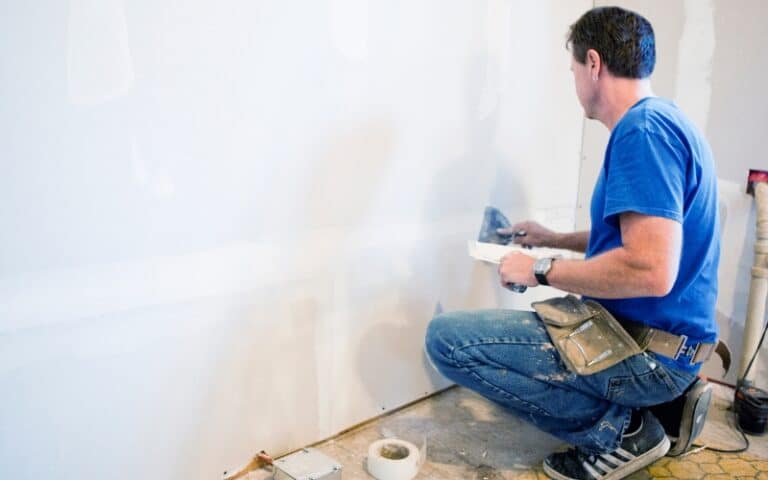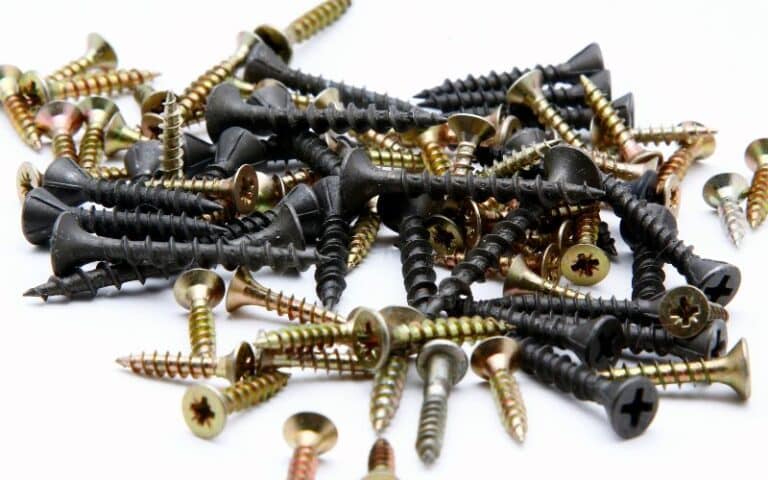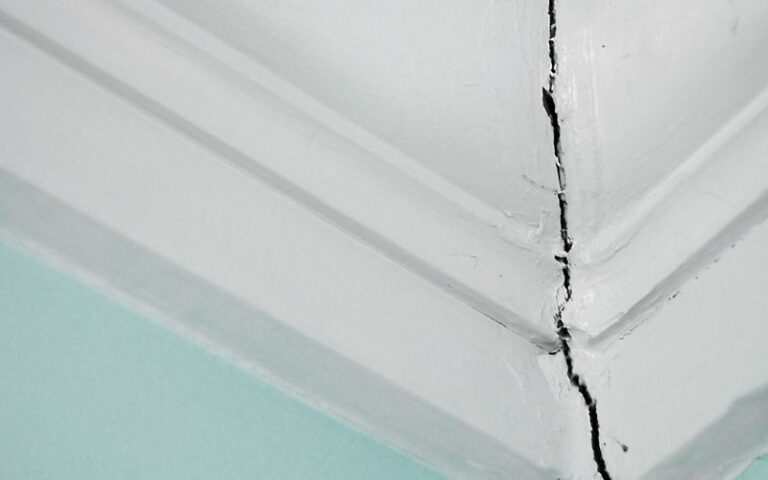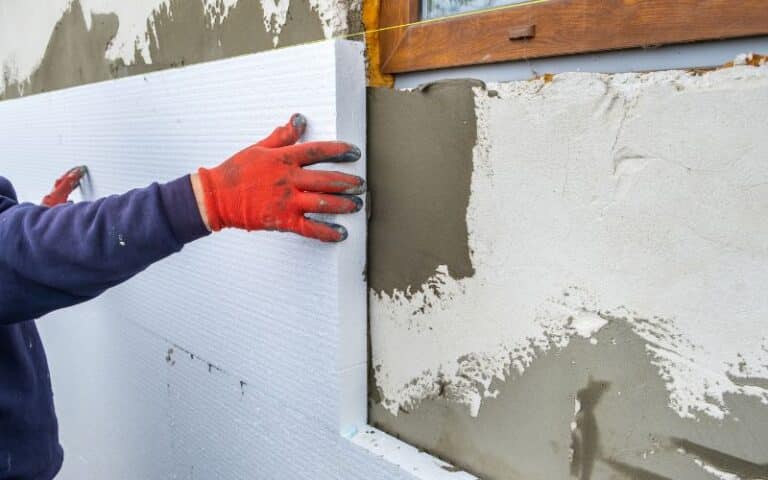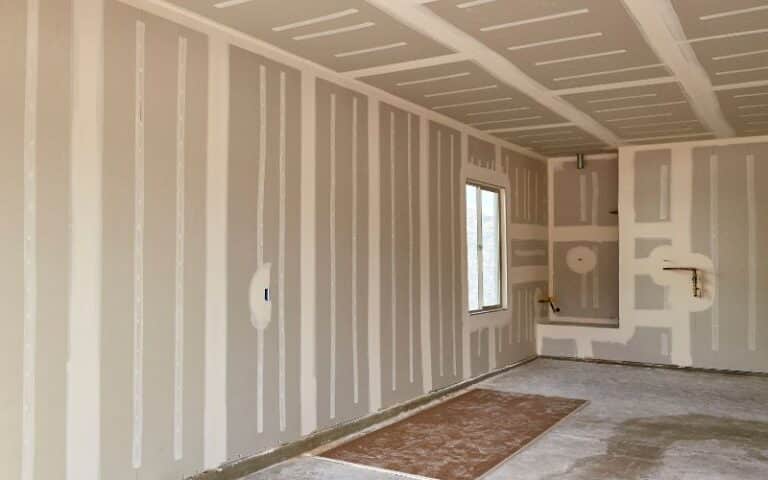The two most common materials used for interior walls are plaster and drywalls. Though they serve the same purpose, drywalls and plaster differ.
Due to the differences between plasters and drywalls, plasterers and drywallers usually use them separately. The reason for this is to ensure compatibility in walls.
However, it is not impossible to plaster on drywalls. It is especially so in cases where the drywall has aged and discolored over time.
Plastering on old brown drywalls may be necessary for a variety of reasons. The common grounds for this practice include improving surface appearances and reinforcing drywalls. Plastering on drywalls is beneficial, but it is not without disadvantages, and experts recommend removing the old drywalls and installing new ones instead.
In this article, you’ll find out if you can plaster over old brown drywalls. You’ll also learn how to prepare old walls for plastering and what to do with old drywalls.
Ready for a Drywall Quiz?
Can You Plaster Over Old Brown Drywall?
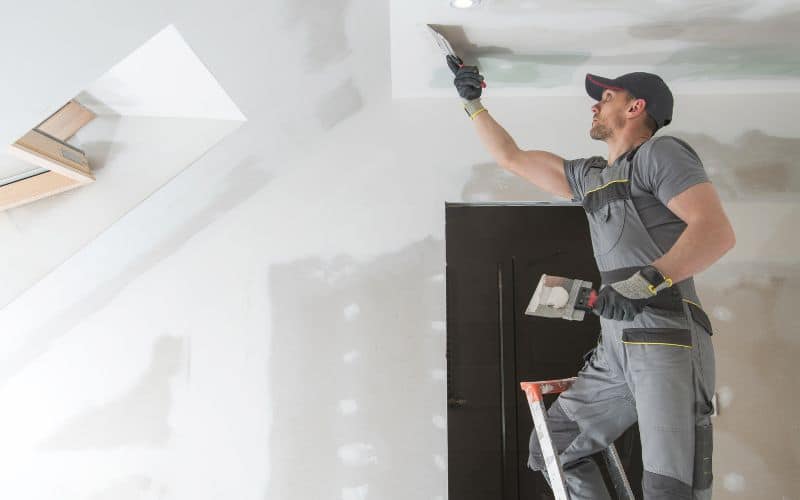
Drywalls and plaster are two different materials for wall surfaces. While it is better to use them independently, you can plaster over drywall, especially if it’s an old brown one.
There are many reasons why you can plaster over old drywalls, which also entail the benefits of this practice. We’ll look at these reasons below.
The most common reason for plastering over old brown drywalls is to improve their appearance.
As drywalls age, they become dirty, discolored, and, in extreme cases, unsightly. Plastering over such walls can give them clean, fresh, and attractive surfaces.
Secondly, old drywalls are susceptible to bumps, dents, and other imperfections you can’t easily hide. Plastering over such flaws can make the walls smoother.
It also makes the walls more even and easier to paint and decorate. These fixes can hide blemishes that usually plague old drywalls.
Thirdly, plaster reinforces walls. It provides extra layers of protection for old and weakened walls. Applications of varying textures can also add to the visual interests of walls.
Furthermore, plastering helps avoid the cost of removing old drywalls, which is time-consuming. It is easier, quicker, and more cost-effective to plaster over them instead.
While plastering over old drywalls may renew their appearance and cover up imperfections, it may also pose some problems.
Firstly, old drywalls, especially painted ones, may not provide the necessary adhesion that plaster requires to bond effectively. Hence, plastering over them will lead to uneven finishes.
Secondly, plastering can trap moisture inside drywalls. This situation can lead to the growth of mold and other moisture-related issues.
Also, plastering may not address damaged or deteriorating old drywalls. Instead, it will conceal the problem and make it harder to detect, leading to more severe problems later.
If you decide to go ahead with plastering old drywalls, however, there are some factors you should consider before doing so. They include the following.
First, it is crucial to assess the condition of the drywall. If it is damaged, it is not a good idea to plaster over it.
However, if the drywall is in good condition, ensure it is clean and free of dust and other particles. You should also remove any loose paper facing before plastering on it.
Secondly, plastering adds additional layers to walls and makes them thicker. This situation will likely affect fixtures such as switches that must sit flush with the existing walls.
You must adjust these installations to make room for a thicker wall.
Lastly, it is vital to use a plaster mix suitable for drywalls. For instance, a gypsum plaster mix bonds well with drywalls and, as such, is ideal for plastering over them.
Conversely, lime plasters are unlikely to bond well with drywall and may result in cracking over time. Summarily, you can plaster over old brown drywall as there are advantages to doing so.
However, it may also cause some issues, and you need to consider some factors before doing so.
How Do You Prepare Old Walls for Plastering?
It can be challenging to plaster over old walls if they have holes or other damages. Therefore, preparing their surfaces properly before plastering is essential to ensure a good finish.
Below are the steps to prepare your old walls for plastering.
#1. Inspection
It is necessary to evaluate the extent of any damage to the wall before plastering. You can do so by a thorough examination of it.
Look out for bumps, holes, or other flaws you must fill or repair. Also, check for any sections of the walls that are loose or crumbling.
#2. Clean the Surface
After inspection, clean the wall with a dry cloth, vacuum cleaner, or a dry stiff-bristled brush. This step will rid the wall of debris and enhance the plaster’s cohesion with the wall.
#3. Repair Damages
Repair any damages you might have noticed while inspecting the walls. Fill holes or cracks with joint compounds and allow them to dry entirely before plastering.
#4. Sand the Surface
Sand, the wall’s surface to make it smooth and even. Sanding the surface ensures that the plaster bonds well with the wall.
#5. Apply PVA
PVA (polyvinyl acetate) is a glue-like substance that enhances plaster adhesion to walls. You can apply it to the wall using a roller or brush.
Your old wall is ready to be plastered when you’ve carried out the steps above. Mix your plaster and apply it in coats until you have an even surface.
Do You Need to Sand Old Walls Before Plastering?
Sanding helps to make wall surfaces smooth and even and ensures the adhesion of the plaster.
Depending on its condition, you may need to sand your old wall before plastering.
Therefore, if your wall is rough and uneven, you will need to sand it to fix them before plastering. Also, if there are rough patches or loose paint, you can take them out by sanding.
However, already smooth and even walls will not require sanding before plastering. You can apply plaster directly on such surfaces.
Also, you may not need to sand walls using a plaster that bonds well with rough walls.
Sanding old walls before plastering have pros and cons, as shown in the table below.
| Pros | Cons |
|---|---|
| Sanding ensures loose materials don’t compromise the plaster’s adhesion. | Dust and debris result from sanding old walls, which can be challenging to clean up. |
| It creates a smooth surface to enhance plaster bonding to the wall. | Sanding consumes time, especially if the wall is in a deplorable condition. |
| The dust and debris from sanding can irritate the eyes, nose, and throat. |
What to Do With Old Drywall?
Drywall, like other building materials, has a lifespan; eventually, you’ll need to replace it. However, you don’t need to be in a dilemma about what to do with your old gypsum board.
Therefore, here are some ways to put your old drywall to use again:
#1. Recycle It:
Look out for recycling programs or your community’s local waste management facility that accepts drywalls and donate yours. They can turn the old gypsum board into new products.
#2. Reuse It:
If your old drywall is not damaged, you can use it for other projects in your house. You can also share them with other DIYers who need them.
#3. Dispose of It:
You should dispose of your drywall if you can’t reuse or recycle it. Check with the waste management facility in your area on how to properly dispose of gypsum boards.
#4. Compost It:
Compost your old drywall, as crushed gypsum can benefit compost bins.
#5. Hire a Professional:
If these ideas or you are unsure what to do with your old drywall, hire a professional. They can help you dispose of or recycle your old gypsum boards.

